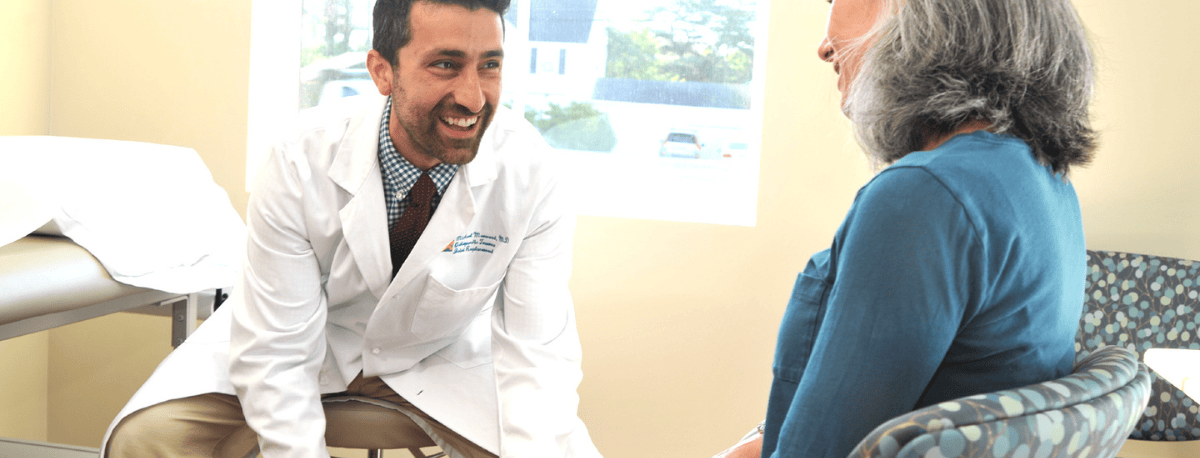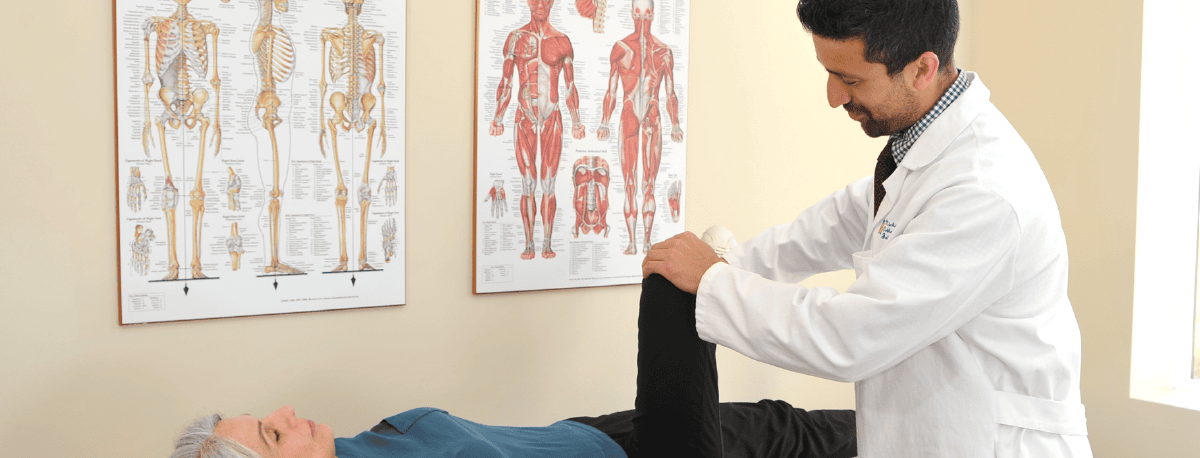Atlantic Orthopaedics’ Dr. Morwood recently became the first surgeon at Portsmouth Regional Hospital to perform a Total Femur Replacement. This complex specialized surgery is used in cases of severe bone damage to remove and replace the entire femur (thigh bone) with an artificial implant. Dr. Morwood detailed the long treatment journey with his patient–an 82-year-old male with multiple myeloma–that led up to the groundbreaking procedure.
The Patient’s Background
The patient first came to Dr. Morwood about four years ago after breaking his hip, a result of cancerous lesions that had weakened the bone. Dr. Morwood performed a successful hip replacement surgery that reduced the pain and restored function to the joint. A few years later, the patient returned complaining of pain in his lower thigh. Tests showed that the patient had a fractured femur, again caused by the myeloma, below his hip replacement. Dr. Morwood was able to fix the fracture by attaching a plate to the side of the patient’s femur to protect the bone. But unfortunately, bone affected by cancer doesn’t heal well and eventually the femur—and the plate!—broke again.
This time, Dr. Morwood fixed the break with an allograf strut–a procedure used to stabilize the femur with an internal splint made from cadaver bone. In time, the patient’s lesions spread throughout the bone, causing the splint to fail, and leaving him once again with knee pain and low range of motion. At that point, the only option left was to replace the entire femur bone, i.e. a total femur replacement.
Surgery and Recovery
Because it would be his first time performing a TFR at Portsmouth Regional Hospital, Dr. Morwood spent a lot of time pre-planning, gathering his whole team together to coordinate in advance of the procedure. The surgery took about four hours and involved removing the femur bone and replacing it with a metal prosthesis. Dr. Morwood attached the implant to the patient’s already-replaced hip and to his knee, which also had to be replaced as part of the procedure. The surgery went smoothly, and the patient was able to begin walking right from the recovery room. He healed well with no infection and now enjoys reduced pain and greatly improved mobility in his hip and knee.
Who Is a Candidate for TFR?
Total Femur Replacement is a relatively uncommon procedure but can be the last, best treatment option for patients with severe bone damage, who might have faced amputation prior to the introduction of TFR. Conditions that warrant the surgery include failed or loose hip replacements, followed by revision, leaving insufficient bone remaining to attach the prosthetic hip. Some patients undergo TFR when they suffer a bone fracture above a total knee replacement and a failed hip replacement above that. As was the case with Dr. Morwood’s patient, bone weakening is often caused by cancer but there can be non-oncological causes as well.
As a knee, hip, trauma and fracture specialist, Dr. Morwood’s extensive surgical expertise includes conventional knee and hip replacement surgery, robotic-assisted joint replacement, revision knee and hip replacement. His mission is to improve the lives of his patients by providing exceptional care using the most advanced practices and technologies, to get them back to doing what they love as soon as possible. If you’re suffering from chronic joint pain and reduced mobility, you don’t have to wait to get treatment. Schedule a consultation with Dr. Morwood today.
Dr. Morwood is also the creator of the “Morwood Minute,” a video series answering all your questions about orthopedics, joint health, robotic-assisted surgeries and more.







